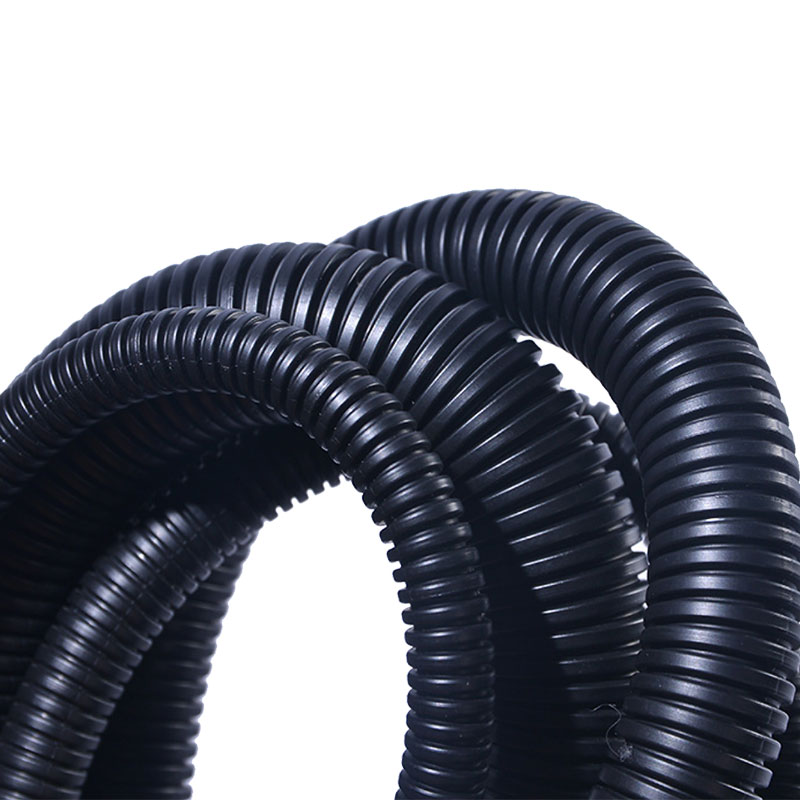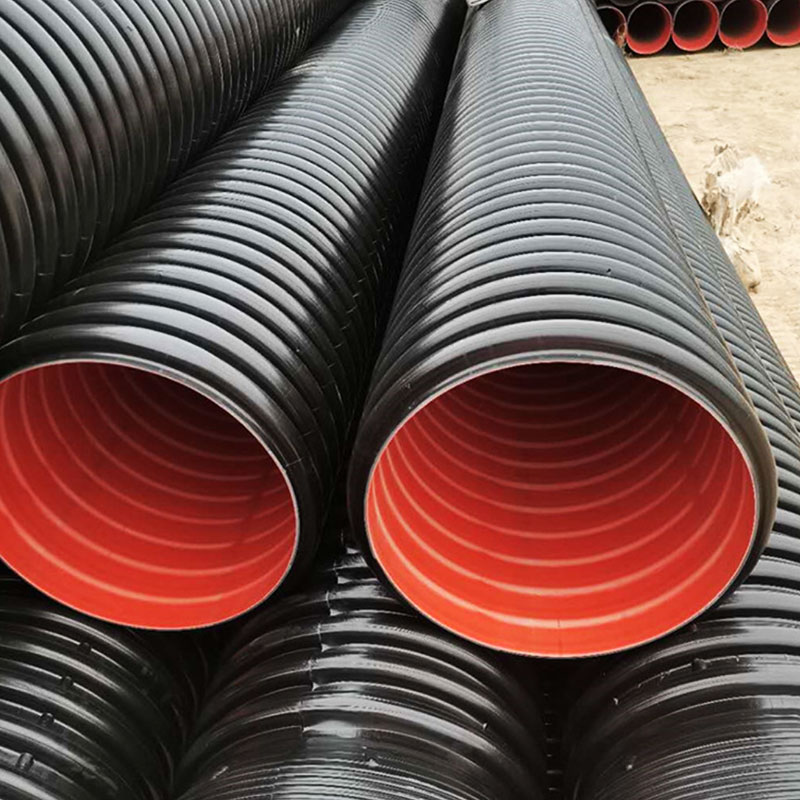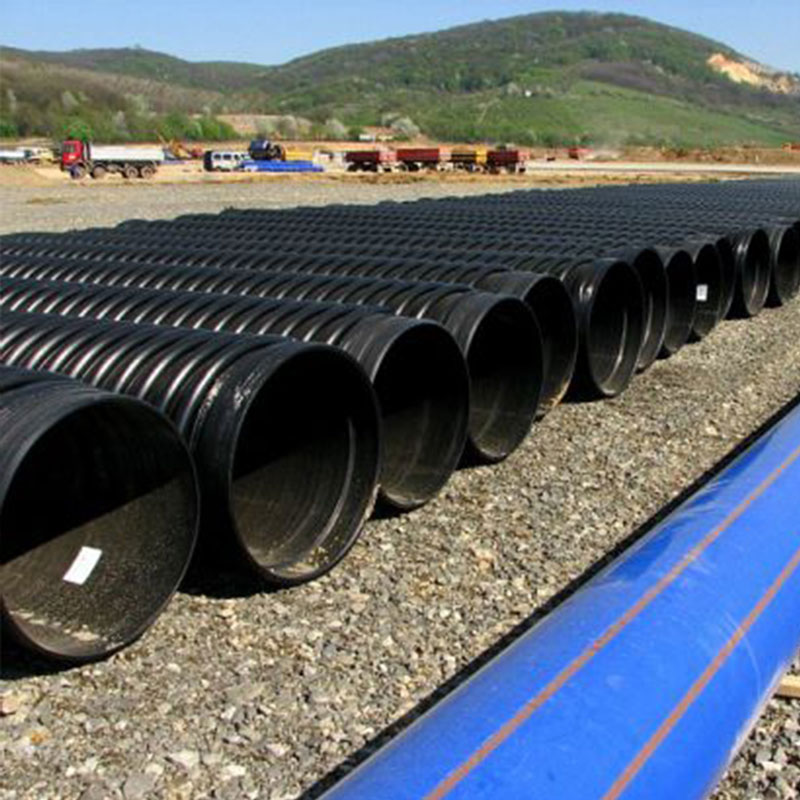في البناء الحضري الحديث, أنظمة خطوط الأنابيب هي عنصر لا غنى عنه. من بين هؤلاء, الأنابيب المموجة, بهيكلها ومزاياها الفريدة, تستخدم على نطاق واسع عبر سيناريوهات مختلفة. اليوم, نتعمق في تفاصيل الأنابيب المموجة PVC و HDPE.
الأنابيب المموجة البلاستيكية
البلاستيكيه, اختصار لكلوريد البوليفينيل, هي مادة بلاستيكية شائعة. الأنابيب المموجة PVC مصنوعة بشكل أساسي من كلوريد البولي فينيل, عرض مقاومة ممتازة للتآكل, مقاومة التآكل, ومقاومة الصدمات, مما يجعلها تستخدم على نطاق واسع في العديد من التطبيقات. أحجام الأنابيب المموجة البلاستيكية متنوعة, السماح بالاختيار على أساس الاحتياجات الفعلية. على سبيل المثال, 24-بوصة الأنابيب المموجة و 24-بوصة أنابيب التصريف المموجة هما حجمان شائعان. الاضافه الي ذلك, خراطيم مموجة PVC هي منتجات شعبية, مرونتها تجعلها أكثر ملاءمة في المواقف التي تتطلب الانحناء.

أنابيب HDPE المموجة
HDPE لتقف على البولي ايثيلين عالي الكثافة, بوليمر. أنابيب HDPE المموجة مصنوعة من البولي إيثيلين عالي الكثافة, توفر قوة أعلى ومقاومة أفضل للتشقق البيئي من الأنابيب المموجة PVC, جعلها أكثر ملاءمة في بيئات معينة, مثل المناطق المعرضة للزلازل.
تتنوع أيضا تركيبات الأنابيب المموجة HDPE, منها أنابيب مموجة مزدوجة الجدار أو أنابيب مموجة مزدوجة. يمكن اختيار هذه التركيبات بناء على متطلبات المشروع المحددة لتلبية الاحتياجات الهندسية المختلفة.

تطبيقات الأنابيب المموجة PVC و HDPE
كل من الأنابيب المموجة PVC و HDPE لها مجالات تطبيق فريدة من نوعها. على سبيل المثال, تستخدم أنابيب الصرف المموجة PVC على نطاق واسع في أنظمة الصرف الحضرية, حيث تضمن مقاومتها الجيدة للتآكل والتآكل المتانة على المدى الطويل. أنابيب HDPE المموجة, من جهة أخرى, تستخدم على نطاق واسع في المشاريع التي تتطلب قوة عالية ومقاومة ممتازة للتشقق البيئي.
مقارنة بين المنفاخ
في حين أن كل من أنابيب PVC و HDPE هي أنواع من الأنابيب المموجة, أنها تختلف اختلافا كبيرا في المواد, اداء, والتطبيق. الأنابيب المموجة البلاستيكية مصنوعة من البولي فينيل كلوريد, في حين أن الأنابيب المموجة HDPE مصنوعة من البولي إيثيلين عالي الكثافة. تؤثر هذه الاختلافات المادية بشكل مباشر على الأنابيب’ اداء.
من حيث الأداء, توفر الأنابيب المموجة PVC مقاومة جيدة للتآكل, مقاومة التآكل, ومقاومة الصدمات. أنابيب HDPE المموجة, لكن, لديها قوة أعلى ومقاومة أفضل للتشقق الإجهاد البيئي. هذا يعني أنه قد تكون هناك حاجة إلى أنواع مختلفة من الأنابيب لسيناريوهات التطبيق المختلفة.
في التطبيق, لكل من الأنابيب المموجة PVC و HDPE مجالات تطبيق محددة. على سبيل المثال, أنابيب الصرف المموجة PVC تستخدم عادة في أنظمة الصرف الصحي في المدينة, بينما أنابيب مموجة مزدوجة الجدار HDPE وغالبا ما تستخدم في المواد الكيميائية, كهربائي, وغيرها من المجالات.

باختصار, لكل من الأنابيب المموجة PVC و HDPE مزاياها, ويجب أن يستند الاختيار بينهما إلى الاحتياجات المحددة والظروف البيئية. بغض النظر عن الاختيار, يعد ضمان جودة الأنابيب أمرا بالغ الأهمية للتشغيل المستقر لنظام خطوط الأنابيب.
في أنظمة خطوط الأنابيب, تلعب كل من الأنابيب المموجة PVC و HDPE أدوارا حيوية. إن فهم خصائص وتطبيقات هذه الأنابيب يمكننا من اختيار المنتجات المناسبة بشكل أفضل لتلبية احتياجاتنا الهندسية. الاضافه الي ذلك, الاهتمام بجودة وصيانة الأنابيب أمر ضروري لضمان التشغيل المستقر لنظام خطوط الأنابيب, توفير أساس متين للبناء الحضري.
 Zhongtong HDPE نظام الأنابيب المورد المهنية
Zhongtong HDPE نظام الأنابيب المورد المهنية